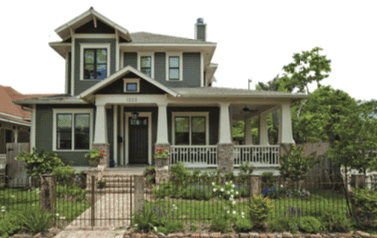From its quirky features to its unique charm, there’s plenty to love about a historic home. For those thinking of purchasing one, there’s also plenty to consider. As anyone who’s watched HGTV can tell you, owning a historic home often comes with its own set of benefits and challenges. Here’s a quick look at the pros and cons of buying a historic home.
Pros:
They offer plenty of character and charm — Stepping inside a historic home is a bit like stepping back in time. From the ornate fireplaces and antique door knockers to the intricate crown molding and vintage built-ins, there are so many fun details to love about an old home.
They are packed with history — In addition to the charming characteristics, a historic home houses its own interest- ing history. Within the home’s walls have lived dozens of owners — all with their own unique stories.
They come in a wide range of stunning architectural styles — If a cookie cutter home isn’t for you, you’ll enjoy living in a house with a distinct old-world style. Historic homes are often constructed in stunning architectural styles, including: Georgian, Colonial, Federal, Victorian, Spanish and more.
You may get financial benefits — If you’re thinking of buying a historic home state and local governments may offer you tax incentives or lower interest loans to restore these historical homes or just to purchase and preserve them.
Cons
Historic homes often require a lot of work — If you’re buying a historic home, you better have a toolkit ready. Given that most historic homes are at least 75 years old, they’re going to require a lot of work. From water damage and electrical issues to structural problems and termite damage, historic homes that haven’t been properly preserved will most certainly fall into disrepair. If you decide to take on this kind of historic home, just make sure you have the finances to restore the property.
Designated historic districts come with strict rules — Perhaps the big-gest con to owning a historic home is that owners must adhere to strict rules and guidelines laid out by local laws. That means owners may not be able to change or add-on to their home without the permission of the city. Having to cut through this extra red tape just to change a home’s exterior is the reason why many choose not to move to a historic home.
You may have unwanted surprises — Think: asbestos, mold or termites. To avoid purchasing a home with these issues, have an experienced and reliable home inspector thoroughly inspect the home first. Chances are, historic homes that haven’t been properly preserved aren’t up to code.
